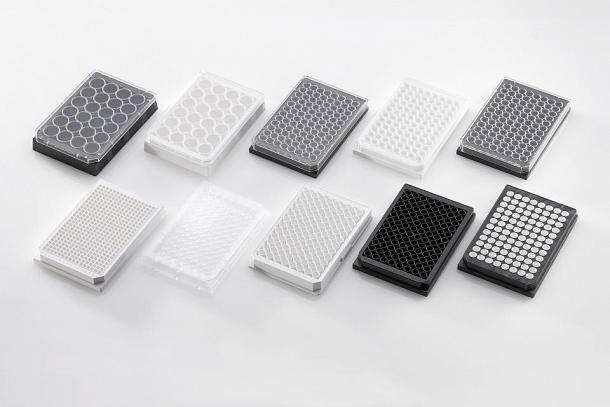
FREQUENTLY ASKED QUESTIONS
Do you want to achieve something with one of our instruments and you don’t know how? Start here to find answers about measurement, injectors, software and more.
How do I convert irradiance into photon flux?
Usually, the irradiance of a light source is given in [W/m²]. Irradiance is defined as the power of electromagnetic radiation incident per unit area on a surface. But for biological processes the quantum flux of light with a distinct wavelength has a higher relevance than the irradiance.
How do I choose the best suited microplate?

As a rule of thumb, white microplates are used for luminescence and black ones are used for fluorescence, but there are many other plate types and assays. Learn more about choosing the best suited microplate for your application.
Generally speaking:
- White microplates and the black plates with white wells are best suited for all luminescence and BRET applications, as their material and surface maximise luminescence signals. In fact, black plates with white wells ensure excellent performance for luminescence measurements, as the black frame reduces crosstalk while the white wells are enhancing the signal.
- Black microplates are recommended for all fluorescence applications as their material minimizes light scattering and reflection of excitation light.
- The tissue culture-treated microplates are individually packed and the plate of choice for all cell-based assays. They are available in white with solid or clear bottom, and in black, also with solid or clear bottom. They are available in white or black with solid or transparent bottom. The transparent bottom is used for microscopic examination of cells and for bottom reading measurements. As crosstalk can be a problem when using clear-bottom microplates, opaque adhesive foils can be used to reduce it.

Câu hỏi tiếp theo
Phần trả lời câu hỏi trên
How do I choose the best filter combination?
The distance between the centre wavelength of the excitation and emission filters should be at least 50 nm. Very often excitation and emission peaks are very close together, but it is important to avoid any overlapping of the filter wavelength; to achieve this, you can easily select excitation filters for a shorter wavelength than the excitation peak, and emission filters for a longer wavelength than the emission peak, and still catch enough light for a nice signal-to-noise ratio.
Please contact our product specialists or sales representatives to help you select the best filters for your application. We have optimized filter sets for many different applications in our program. Alternatively, customized filters are available on request.
Further information about our available filters and filter sets can be found under Optical Filters.
